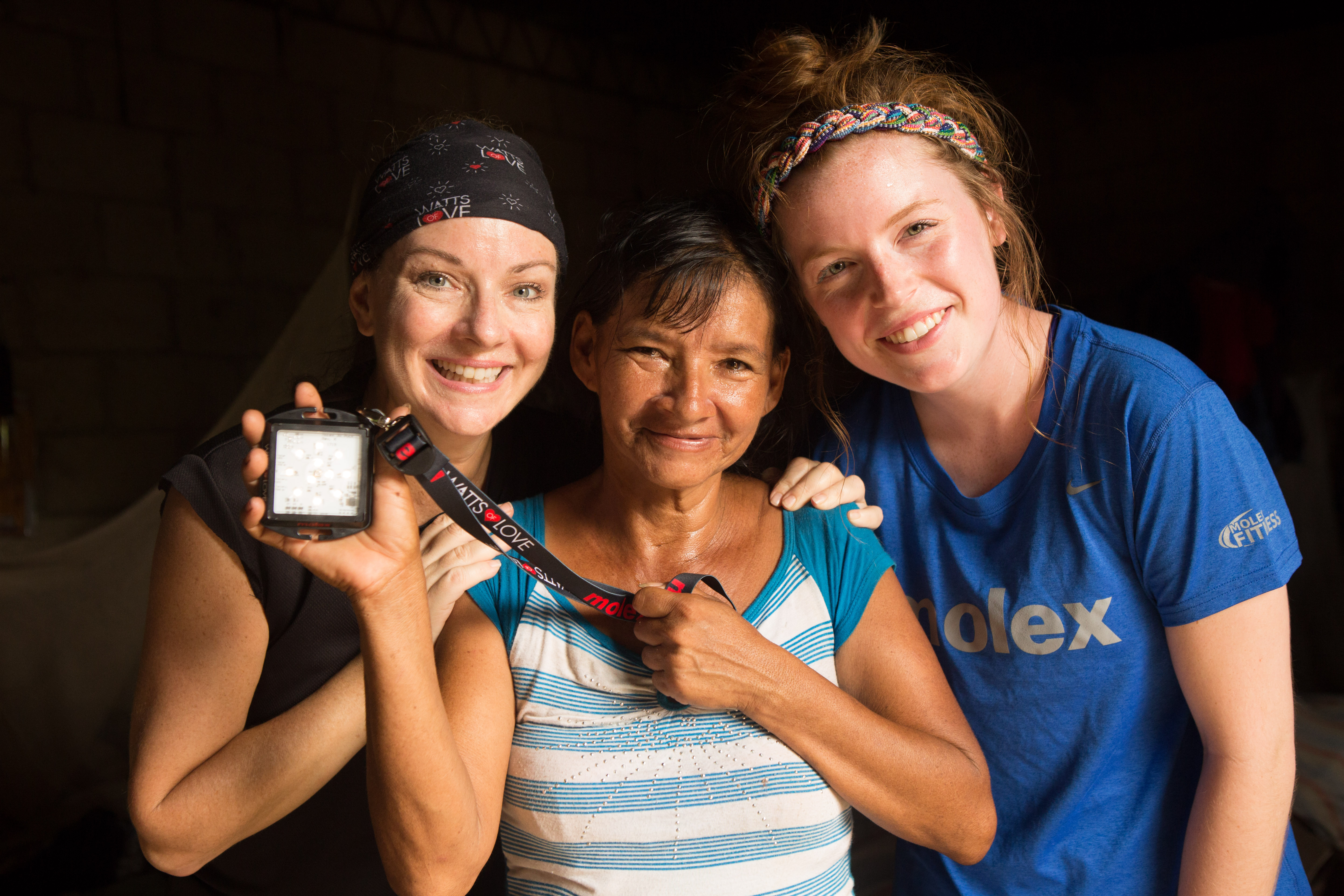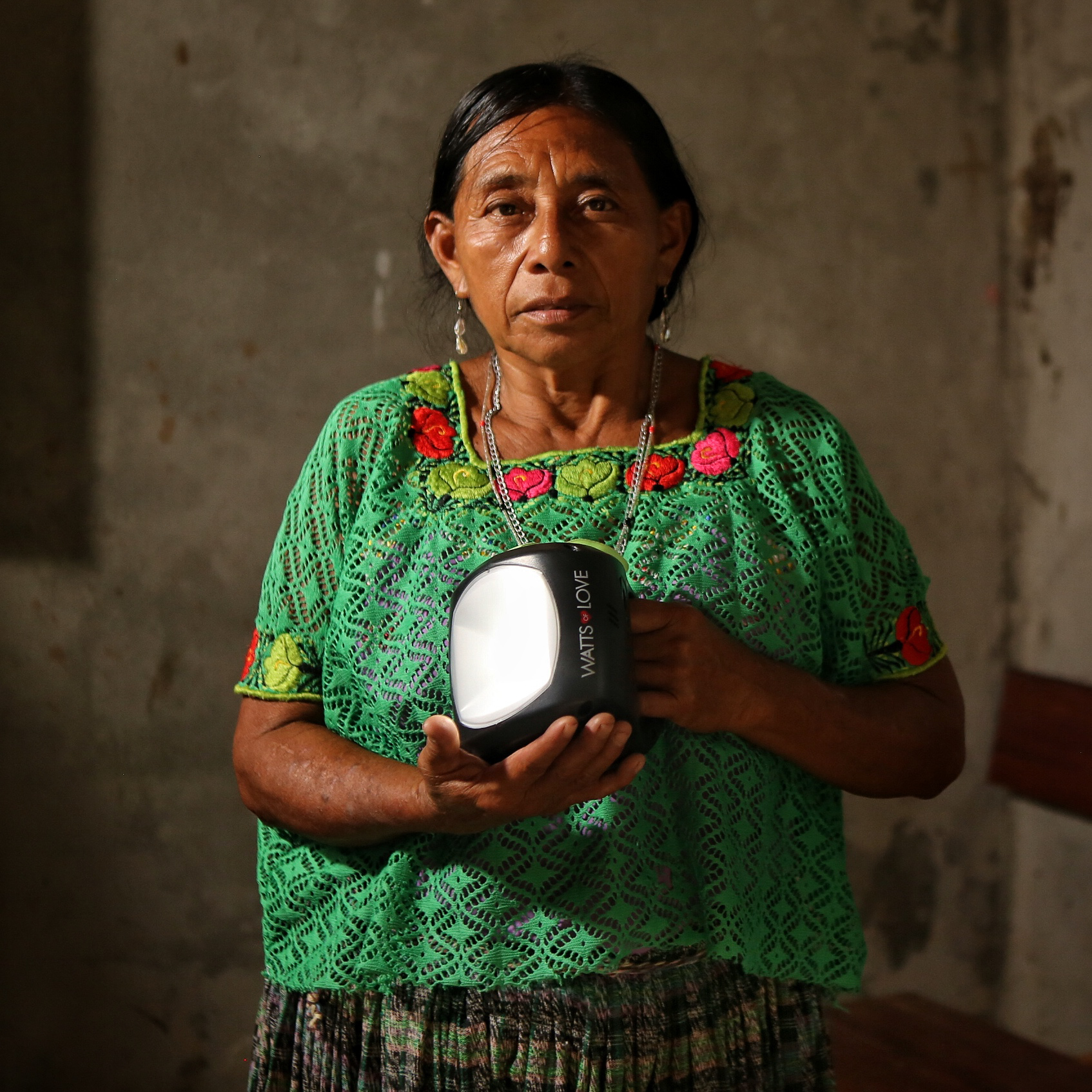For villagers in the jungles of Guatemala, light still comes from burning a fuel that was phased out in many parts of the world as a lighting source in the early 20th century. Here, many people still live off the power grid, and kerosene remains a key light source – but it’s also what’s holding them back.
That’s because using kerosene as a primary light source is an environmental and safety hazard, as well as a financial burden. Research conducted by Yale University shows that kerosene lighting often results in concentrations of household air pollution 10 times above safe levels, contributing to heart disease, COPD and lung cancer.
Additionally, as much as 20 to 30 percent of a family’s income can go to pay for the fuel. Then there’s the risk – flames from kerosene can torch the thatched huts that many in these rural communities call home.
The Chicagoland-based nonprofit Watts of Love hopes to change things for the 1.2 billion people that still lack access to reliable power, with assistance from Koch subsidiary Molex, a manufacturer of electrical and electronic connectors and solutions.
Founded by Nancy and John Economou in 2013, Watts of Love has delivered 15,000 solar lights to help improve the quality of life for more than 100,000 people across 30 countries, including Mozambique, Haiti and the Philippines.

Nancy Economou (left), founder and president of Watts of Love, and Annie Wallace (right), associate sales engineer with Molex, smile alongside a Guatemalan woman who recently received one of the newly designed Molex LED lights.
A working relationship quickly formed between Molex and Watts of Love through a chance encounter between Nancy Economou and Molex’s Mike Picini, VP of network connected solutions, at a fundraiser in 2013.
At the time, Watts of Love needed a light that was more portable and less bulky and difficult to transport than the model it had been distributing. Picini’s thoughts immediately went to a magnetic LED puck light that Molex had developed for commercial use. It seemed like a great starting point for Watts of Love’s needs.
“Our initial light was a bulky two-piece unit where the solar panel was separate,” Nancy Economou said. “As we were deploying lights, I would look at them and think, ‘Oh my gosh … we’re shipping air.’ And I had a vision for bringing more lights to people living on the fringe – that we could throw 500 in a backpack and be able to reach those people.”
Picini tasked his team to collaborate with both Watts of Love founders and principle Kevin Kuster to develop a better solution. Vic Zaderej, manager of advanced development with Molex, began working with the Watts of Love team to create a working prototype.
The objective was to develop a light that was extremely compact, multifunctional, bright and could survive the harshest conditions across the globe. With five years of field research, the Watts team knew it needed a quality solar light to be portable, rugged, water-resistant and wearable.
The resulting solar light, which took about a year of design and prototyping, checks all of Watts of Love’s boxes. It has a maximum light output of 250 lumens, which is comparable to a 15-watt incandescent light bulb. It’s also water resistant, and the rechargeable battery is expected to last three years.
Another benefit to the new design is the amount of time it takes to fully recharge the light. Because the lights are solar-powered and sun is plentiful in many regions of the world where Watts of Love hopes to deploy them, Zaderej wanted the end product to offer a full night of power on a day’s charge.
“That would maximize the amount of light or energy it could store, the length of light one could get out of it, and how bright they could make it,” Zaderej said. “You would just set it out in the morning, charge it during the day, and by evening it’s ready to go.”
With new lights in tow, Watts of Love traveled to Guatemala this past June to deliver 100 units to a small community near the municipality of Zacapa still dependent on kerosene lamps. According to World Bank data from 2014, roughly 2.5 million people across this small Central American country are still in the dark.
-

A simple solar LED light can significantly improve the quality of life for the 1.2 billion people still lacking access to reliable electric grids. One light can eliminate burns from kerosene lamps, help children read and study longer, and promote productivity after the sun sets.
-

A simple solar LED light can significantly improve the quality of life for the 1.2 billion people still lacking access to reliable electric grids. One light can eliminate burns from kerosene lamps, help children read and study longer, and promote productivity after the sun sets.
-

A simple solar LED light can significantly improve the quality of life for the 1.2 billion people still lacking access to reliable electric grids. One light can eliminate burns from kerosene lamps, help children read and study longer, and promote productivity after the sun sets.
-

A simple solar LED light can significantly improve the quality of life for the 1.2 billion people still lacking access to reliable electric grids. One light can eliminate burns from kerosene lamps, help children read and study longer, and promote productivity after the sun sets.
-

A simple solar LED light can significantly improve the quality of life for the 1.2 billion people still lacking access to reliable electric grids. One light can eliminate burns from kerosene lamps, help children read and study longer, and promote productivity after the sun sets.
“While I was in Guatemala with Watts of Love, I was able to witness how much of an impact these lights have on the lives of the people living there,” said Annie Wallace, an associate sales engineer with Molex. “A simple light gives these people security, increases productivity and the ability to study and work toward a higher paying job.”
By eliminating the need for things like kerosene, candles and batteries and using renewable solar energy, families can save as much as $20 a month. While that might not sound like a lot, in the parts of the world where these lights will be used most, it’s enough to purchase a farm animal that can provide families with food.
“Giving a family light is a life-changing opportunity,” said Wallace. “It breaks the cycle of poverty and dependence, and it gives a family the ability to be self-sufficient and the ability to pull themselves out of the darkness of poverty.
“The light is a hand up, not a hand out.”
As an official sponsor of The Bank of America Chicago Marathon, Molex plans to use its visibility at the event to share space with Watts of Love and shine a light on this global issue.
“We will give out 5,000 lights to participants and collect market research on where people think these lights might be valued and utilized through a short survey,” Wallace said. “For every completed survey we receive, we will donate a light to Watts of Love to give away on their upcoming trips.”

Members of Watts of Love’s travel team stand shoulder-to-shoulder with villagers from a small community in Zacapa, Guatemala. Watts of Love distributed 100 solar-powered LED lights to the villagers in June 2017.
The Molex team is now focused on having roughly 15,000 units in the production pipeline at any given time – units that will soon be put to good use when Watts of Love heads to Haiti and back to the Philippines in 2018.
“It’s incredible to see firsthand how a light can totally change a life overnight,” said Wallace. “Together, with Molex supplying the physical solar light and Watts of Love providing the outreach and education, we are capable of advancing lives and breaking the cycle of poverty.”
Learn more about Watts of Love
Suggested Reading: The Green Hand™ Project